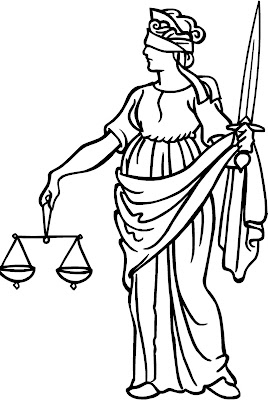When President Obama nominated Sonia Sotomayor to fill David Souter’s seat on the US Supreme Court, he ensured that opponents in the confirmation process will focus sharply on the President’s listing of “empathy” among the qualifications he sought and the related question of his nominee’s ability to apply the law fairly and impartially. Conservative activists and pundits have already been harping for weeks on the alleged problem of “empathy” and have consistently raised the fact that the traditional allegorical figure of “Lady Justice” wears a blindfold.

What they seem less eager to discuss, however, is the object “she” always holds in her hand and its particular condition. “Lady Justice,” of course, bears scales. Furthermore, “her” scales always appear perfectly balanced, neither side elevated over the other.
The most immediate symbolism of “her” scales, the significance that accords most easily with that of “her” blindfold, surely is “her” ability to avoid privileging either side in a dispute, her commitment to applying justice without being swayed improperly to one or the other. But this rather misses the point. When any judge renders a verdict, they very frequently imbalance their scales by deciding in favor of one side or another. The figure thus contains a fair amount of ambiguity. Considered another way, the balance of the scales represents the result of “her” adjudication. One of the functions of “Lady Justice” is to recognize imbalance, i.e. injustice and restore it to its appropriate condition. “She” must recognize that the positions of parties to a dispute do not have equally valid claims and/or positions, and render a judgment that creates a situation of fairness and justice. Empathy certainly is not sufficient for this process, but neither is it irrelevant.



